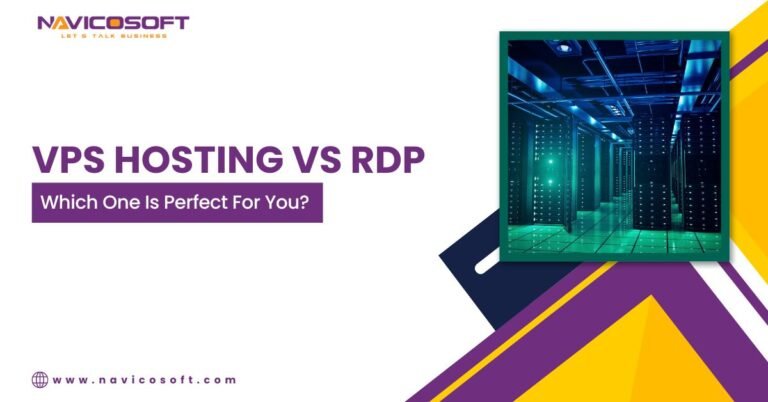In the comparison of VPS hosting vs. RDP, VPS provides complete control and flexibility for web hosting, while RDP gives perfect remote access to your desktop environment. There are numerous types of virtual access operating on multiple protocols that offer requirement-specific attributes for managing diverse things. In this post, you will find out the critical differences between VPS and New York RDP and their types.
Let’s dig into it:
When it comes to distinguishing between VPS hosting vs. RDP, determining what they are is necessary. The following points will help you to know better what the perfect suit is for you:
What is RDP (Remote Desktop Protocol)?
- Objective:
RDP is a protocol created by Microsoft that enables a user to link with another computer over a network environment. Basically, it’s a remote access tool.
- Utilization:
It’s usually employed to access a remote computer or server. Therefore, Businesses utilize RDP to help employees work remotely from their homes quickly.
- Control:
With RDP, you are linking with a particular machine and controlling it as you were sitting just before it. However, you have access to the desktop environment, different apps, and files on that remote computer.
- Administration:
The hosting provider administers the server. Being a user, you only have a little access to the server’s configuration or the operating system.
- Operating System:
RDP mainly links to Windows operating systems, though there are RDP clients who are accessible for other OS such as macOS and Linux.
What are the different Types of RDP?
Understanding the various types of RDP helps you select the perfect solution for your particular requirements. The following are some common types of RDP systems:
1. Standard RDP:
This is the fundamental type of RDP offered by Microsoft. Thus, it enables users to link to a remote computer using the RDP client software.
2. Managed RDP:
In a managed RDP system, the hosting provider handles the remote desktop environment, like software updates, security issues, and technical assistance.
3. Cloud-Based RDP:
This form of RDP utilizes cloud infrastructure to host remote desktops. Therefore, Users can control their desktops from anywhere with a networking connection.
4. Remote Desktop Services (RDS):
These are known as Terminal Services. Hence, RDS is a Microsoft service that enables many users to log in to an individual server. Moreover, every user acquires a distinct desktop session.
5. Hosted RDP:
In this system, a third-party provider controls the remote desktops on their servers. So, Users link with their desktops over the internet.
6. RDP for Virtual Machines (VMs):
RDP can be utilized to link with the virtual machines hosted on-site or in the cloud. Thus, the configuration of each VM can provide a particular desktop environment.
7. RDP over VPN:
This form of RDP uses a Virtual Private Network (VPN) to link safely to a remote desktop. Therefore, the VPN encodes the RDP traffic, creating an additional layer of security.
8. RDP Gateway:
An RDP Gateway helps users link with remote desktops over the internet without using a VPN. So, the gateway provides a safe environment by compressing the RDP traffic.
VPS (Virtual Private Server):
- Objective:
A VPS is a virtualized server hosted on a physical server, so opt for a New York VPS Server for security and reliability. Consequently, it offers the users a dedicated portion of that physical server’s resources, serving as an independent server.
- Utilization:
VPS hosting is perfect for hosting websites and operating applications or serving as a server for other internet services. However, it’s employed by businesses and developers who desire more control over their hosting environment.
- Control:
With NYC VPS, you have entire root or administrative access to the virtual server. Thus, it means you can easily install and configure the OS, applications, and settings to meet your needs.
- Administration:
You are accountable for controlling and maintaining the VPS, like updates and security. Yet, some hosting providers also give managed VPS hosting.
- Operating System:
VPS hosting New York assists different operating systems, like Linux distributions (like Ubuntu CentOS) and Windows Server.
What are the Types of VPS hosting?
The following are some common types of vps hosting in New York:
1. Managed VPS:
In a managed VPS hosting, the hosting provider manages and controls server management tasks, such as updates, security, backups, and technical assistance.
2. Unmanaged VPS:
With unmanaged VPS, the user tackles all of the server management tasks. So, the hosting provider only ensures that the server hardware and network are going well.
3. Cloud VPS:
Cloud VPS hosting uses cloud infrastructure, giving high scalability, adaptability, and redundancy. Thus, resources can be accommodated according to their needs.
4. Windows VPS:
This form of VPS operates on a Windows Server operating system. Therefore, it’s particularly designed to assist applications and environments that need Windows-based hosting.
5. Linux VPS:
A Linux VPS operates on a Linux operating system. Thus, it is perfect for its stability, security, and adaptability.
6. SSD VPS:
This type of VPS employs solid state drives (SSD) for storage, unlike other traditional hard disk drives (HDD). So, the SSDs provide instant read/write speeds and optimal performance.
7. Storage VPS:
It offers a massive quantity of disk space, making it perfect for data storage, backups, and archiving.
9. Reseller VPS:
This form of VPS is made for resellers who desire to host numerous clients on their virtual server. However, it enables the production of multiple virtual environments within a separate VPS.
Comparison among VPS hosting vs. RDP:
- Level of administration:
RDP: restricted to control of a remote desktop with the environment established by the hosting provider.
VPS: complete control over the server environment, enabling colossal customization.
- Consumption Case:
RDP: suitable for remote access to a desktop environment, beneficial for work-from-home setups, or accessing particular software on a remote machine.
VPS: suitable for hosting websites, apps, and services where you require dedicated server resources and complete control over the server.
- Resource distribution:
RDP: in the remote desktop protocol, the sharing of resources takes place on the identical server.
VPS: distributed particular resources like CPU, RAM, and storage that are dedicated to your virtual server.
- Scalability:
RDP: confined scalability as it relies on the resources of the separate remote machine you are accessing.
VPS: completely scalable as you can easily update resources such as CPU, RAM, and storage.
Verdict:
In the difference between VPS hosting vs. RDP, the selection of the best fit highly depends on you. Thus, if you desire more access and control of a remote desktop, RDP will be the best option for you. Yet, if you need a customizable server environment for hosting websites or apps, VPS in New York is more appropriate. Considering these differences helps you to select the perfect solution for your needs.




